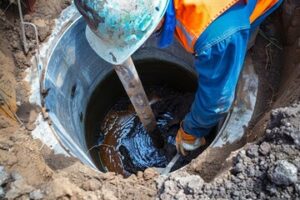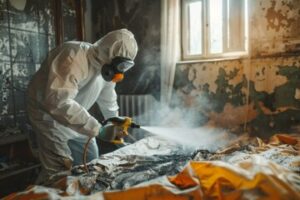HVAC Round Rock systems play a crucial role in maintaining comfortable indoor environments by regulating temperature, humidity, and air quality. These systems are essential for both residential and commercial properties, ensuring that occupants experience consistent comfort regardless of outdoor weather conditions.

HVAC stands for heating, ventilation, and air conditioning, encompassing a complex network of components designed to work together to create a balanced and controlled indoor climate. The increasing reliance on HVAC systems highlights their importance in enhancing comfort, improving energy efficiency, and supporting overall well-being.
Heating is a fundamental function of an HVAC system, particularly during colder months when maintaining a warm indoor environment is essential for comfort and health. Heating systems can operate using various methods, including forced air, radiant heat, and heat pumps, depending on the specific design and requirements of the property. Forced air systems use a furnace to generate heat, which is then distributed through ductwork to different rooms. Radiant heating systems, on the other hand, use heated water or electric coils to warm floors, walls, or ceilings, providing consistent and even heat distribution. Heat pumps work by transferring heat from the outside air or ground into the indoor space, offering an energy-efficient solution for maintaining warmth. Proper heating ensures that indoor spaces remain comfortable, even during extreme weather conditions.
Ventilation is another critical aspect of HVAC systems, as it regulates the flow of fresh air into the building while expelling stale air. Effective ventilation helps maintain healthy indoor air quality by removing pollutants, allergens, and moisture that can accumulate over time. Natural ventilation relies on openings such as windows and vents to allow air to circulate, but mechanical ventilation systems use fans and ductwork to control airflow more precisely. Modern HVAC systems often integrate advanced ventilation technologies, including air exchangers and filtration systems, to enhance indoor air quality. Proper ventilation reduces the risk of respiratory issues, mold growth, and unpleasant odors, contributing to a healthier and more comfortable living environment.
Air conditioning is a vital component of HVAC systems, especially in regions with hot and humid climates. Air conditioning systems work by removing heat and moisture from indoor air, creating a cooler and more comfortable environment. Central air conditioning systems use a network of ducts to distribute cooled air throughout the building, while ductless systems provide targeted cooling for specific areas. The refrigeration cycle is at the core of air conditioning systems, involving the compression, condensation, expansion, and evaporation of a refrigerant to absorb and release heat. Modern air conditioning systems are designed to operate efficiently, using variable-speed compressors and smart controls to optimize energy consumption and maintain consistent cooling. Proper air conditioning improves indoor comfort, enhances sleep quality, and supports overall health and well-being.
Energy efficiency is a significant consideration when designing and operating HVAC systems. Advances in HVAC technology have led to the development of high-efficiency systems that reduce energy consumption and lower utility costs. Energy-efficient heating systems use modulating burners and variable-speed blowers to adjust output based on demand, minimizing energy waste. High-efficiency air conditioning systems use inverter technology and programmable thermostats to optimize cooling performance while reducing energy use. Proper insulation and sealing of ductwork also enhance energy efficiency by preventing heat loss and air leaks. The integration of smart controls and sensors allows HVAC systems to adjust automatically based on occupancy, temperature, and humidity levels, further improving energy efficiency and reducing operational costs.
HVAC maintenance is essential for ensuring the long-term performance and reliability of the system. Regular maintenance includes cleaning or replacing air filters, inspecting ductwork for leaks, and checking refrigerant levels. Professional HVAC technicians conduct thorough inspections to identify and address potential issues before they escalate into costly repairs. Preventive maintenance helps maintain consistent performance, improve energy efficiency, and extend the lifespan of the system. Neglecting maintenance can lead to reduced airflow, poor air quality, and increased energy consumption. Scheduling regular maintenance ensures that HVAC systems operate at peak efficiency and provide reliable comfort throughout the year.
Indoor air quality is directly influenced by the performance of an HVAC system. Pollutants such as dust, pollen, pet dander, and volatile organic compounds (VOCs) can accumulate in indoor air, leading to respiratory issues and allergic reactions. HVAC systems equipped with high-efficiency particulate air (HEPA) filters and ultraviolet (UV) light technology help remove airborne contaminants and neutralize pathogens. Humidity control is also essential for maintaining indoor air quality, as excessive moisture can promote mold growth and create an uncomfortable environment. Dehumidifiers and humidifiers integrated into HVAC systems help maintain balanced humidity levels, improving overall comfort and air quality. Proper ventilation, filtration, and humidity control create a healthier and more comfortable indoor environment.
HVAC zoning systems provide enhanced comfort and energy efficiency by allowing different areas of a building to be heated or cooled independently. Zoning systems use multiple thermostats and dampers within the ductwork to regulate airflow and temperature in specific zones. This allows occupants to customize the climate in different rooms based on their preferences and occupancy patterns. Zoning systems reduce energy waste by directing conditioned air only to areas that require it, improving overall efficiency and comfort. Smart zoning systems use advanced sensors and automation to adjust settings based on real-time data, further enhancing performance and energy savings.
Smart HVAC technology has transformed the way heating, ventilation, and air conditioning systems operate. Smart thermostats and control systems allow users to adjust temperature settings remotely using mobile apps and voice commands. Machine learning algorithms analyze usage patterns and environmental conditions to optimize system performance and reduce energy consumption. Smart HVAC systems can integrate with other home automation systems, such as lighting and security, to create a seamless and energy-efficient living environment. Real-time monitoring and diagnostic capabilities enable early detection of issues and automatic adjustments to maintain consistent comfort and performance. The integration of smart technology enhances the functionality and convenience of HVAC systems.
Retrofitting older buildings with modern HVAC systems presents unique challenges and opportunities. Aging infrastructure, outdated ductwork, and limited space can complicate the installation process. HVAC contractors assess the structural integrity and layout of the building to determine the most suitable retrofitting solution. Ductless mini-split systems and high-velocity air handlers are popular options for retrofitting, as they require minimal modifications and provide efficient heating and cooling. Retrofitting projects often include upgrades to insulation, windows, and sealing to improve overall energy efficiency and comfort. Modern HVAC systems are designed to adapt to various building designs and layouts, ensuring compatibility and optimal performance.
Commercial HVAC systems differ from residential systems in terms of scale, complexity, and operational requirements. Large commercial buildings require powerful and efficient HVAC systems to maintain consistent temperature and air quality across multiple floors and zones. Commercial systems often use rooftop units, chillers, and complex ductwork to distribute conditioned air efficiently. Variable refrigerant flow (VRF) systems and energy recovery ventilation (ERV) systems are popular choices for commercial applications due to their ability to adjust output based on demand and recover energy from exhaust air. Regular maintenance and performance monitoring are essential for ensuring the reliability and efficiency of commercial HVAC systems.
The design and installation of HVAC systems require specialized knowledge and expertise. HVAC contractors assess various factors, including building size, occupancy patterns, and climate conditions, to design a system that meets the specific needs of the property. Proper sizing and load calculation are critical for ensuring that the system operates efficiently and provides consistent comfort. Oversized or undersized systems can lead to uneven heating and cooling, increased energy consumption, and reduced lifespan. Professional installation ensures that all components, including ductwork, vents, and controls, are properly configured and balanced for optimal performance. Attention to detail during the installation process enhances the system’s reliability and longevity.
HVAC systems play an essential role in maintaining a comfortable and healthy indoor environment. Advances in technology, energy efficiency, and smart controls continue to improve the performance and functionality of HVAC systems. Regular maintenance, proper installation, and modern upgrades ensure that HVAC systems provide consistent comfort, improve air quality, and reduce energy costs. The growing focus on sustainability and environmental impact drives innovation in HVAC design and operation, making modern systems more efficient and adaptable to changing needs. As the demand for comfort, energy efficiency, and indoor air quality increases, HVAC systems remain a cornerstone of modern living and building management.
4o








